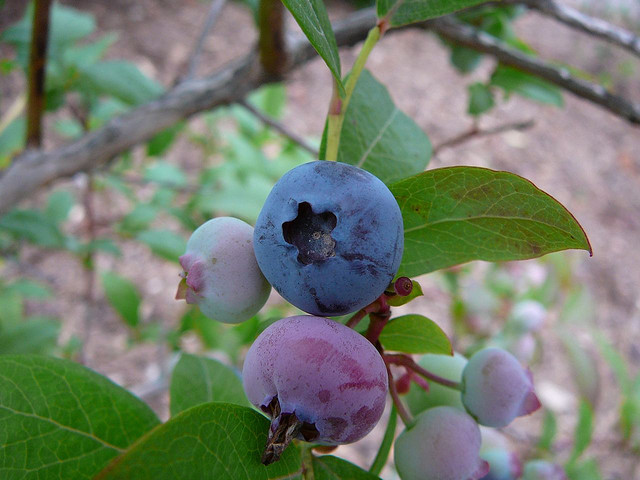Highbush blueberries; photo by Kingsbrae Garden on Flickr (noncommercial use permitted with attribution / share alike).
Official State Fruit of New Jersey
New Jersey designated highbush blueberry (Vaccinium corymbosum) as the official state fruit in 2003 after fourth-graders at Veteran’s Memorial Elementary School in Brick campaigned to make the blueberry the official fruit symbol of New Jersey. All State Foods
New Jersey Legislation
WHEREAS, The highbush blueberry is indigenous to New Jersey, where it was first cultivated for commercial production, due to pioneering work by New Jerseyan Elizabeth White and Dr. Frederick Covile, who in the early 1900's dedicated themselves to the study, domestication, and breeding of blueberries at Whitesbog, in Browns Mills, New Jersey; and
WHEREAS, the cultivation of highbush blueberries in New Jersey served as the basis for an entirely new agricultural industry; and
WHEREAS, Blueberries taste good, are good for you, are high in fiber, vitamin C, and antioxidants, are sodium and cholesterol-free, are low in calories and provide medical and health benefits, including the prevention of cancer and heart disease; and
WHEREAS, Blueberries are appreciated around the world, especially in the area of nutrition and the emerging field of nutraceuticals, where blueberries are known for their health benefits and medicinal properties; and
WHEREAS, New Jersey ranks second in the nation in blueberry cultivation, producing 21% of the nation's total, with 38 million pounds grown annually on 8,000 acres, spanning seven counties in central and southern New Jersey; and
WHEREAS, New Jersey is widely recognized as the blueberry capital of the nation, and the highbush blueberry, also known as the "New Jersey blueberry," is the ideal symbol of a delicious, nutritious, and healthful fruit ...
Be it Enacted ... the highbush blueberry (Vaccinium corymbosum) is designated as the New Jersey State Fruit.

